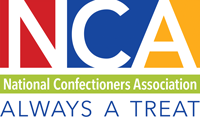Reforming the U.S. Sugar Program
History & Background
To this day, the sugar program is the only commodity support program in the Farm Bill that has not been reformed by federal lawmakers. In fact, the program has grown for over 80 years to the benefit of a few extremely wealthy sugar processors, placing a heavy burden on American consumers and the small businesses that are the backbone of the U.S. economy.
Where Does Sugar Come From?
Domestic Sources
Sugar is derived from two different crops, which are grown in a handful of states:
- Sugarcane is milled into raw sugar and then refined. It is grown in Florida, Hawaii, Louisiana and Texas.
- Sugar beets are processed directly into refined sugar. It is grown in California, Colorado, Idaho, Michigan, Minnesota, Montana, Nebraska, North Dakota, Oregon, Washington and Wyoming.
Reliance on Imports
The United States must rely on sugar imports to meet market demand each year. Most imports come from countries in Central America, South America, Asia, Africa and the Caribbean.
How Does This Impact the Food Industry?
When the federal government prioritizes a small group of sugar producers over American consumers and manufacturers, the cost of products and job availability are negatively impacted in multiple ways:
- Three American manufacturing jobs are lost for one sugar-producing job saved by current sugar program protections.
- American manufacturers are forced to pay twice what the rest of the world pays for sugar, making them less competitive and the products more expensive.
- The program costs American consumers and small businesses $2.4-4 billion a year.
- An estimated 123,000 U.S. manufacturing jobs were lost between 1997 and 2015 due to the sugar program’s protections.
How Can You Get Involved?
- If you have been impacted by the sugar program, reach out to NCA to tell your story
- Contact NCA or visit the Alliance for Fair Sugar Policy to learn more about the program
- Update your contact information so that NCA can reach you with the most up to date information.




